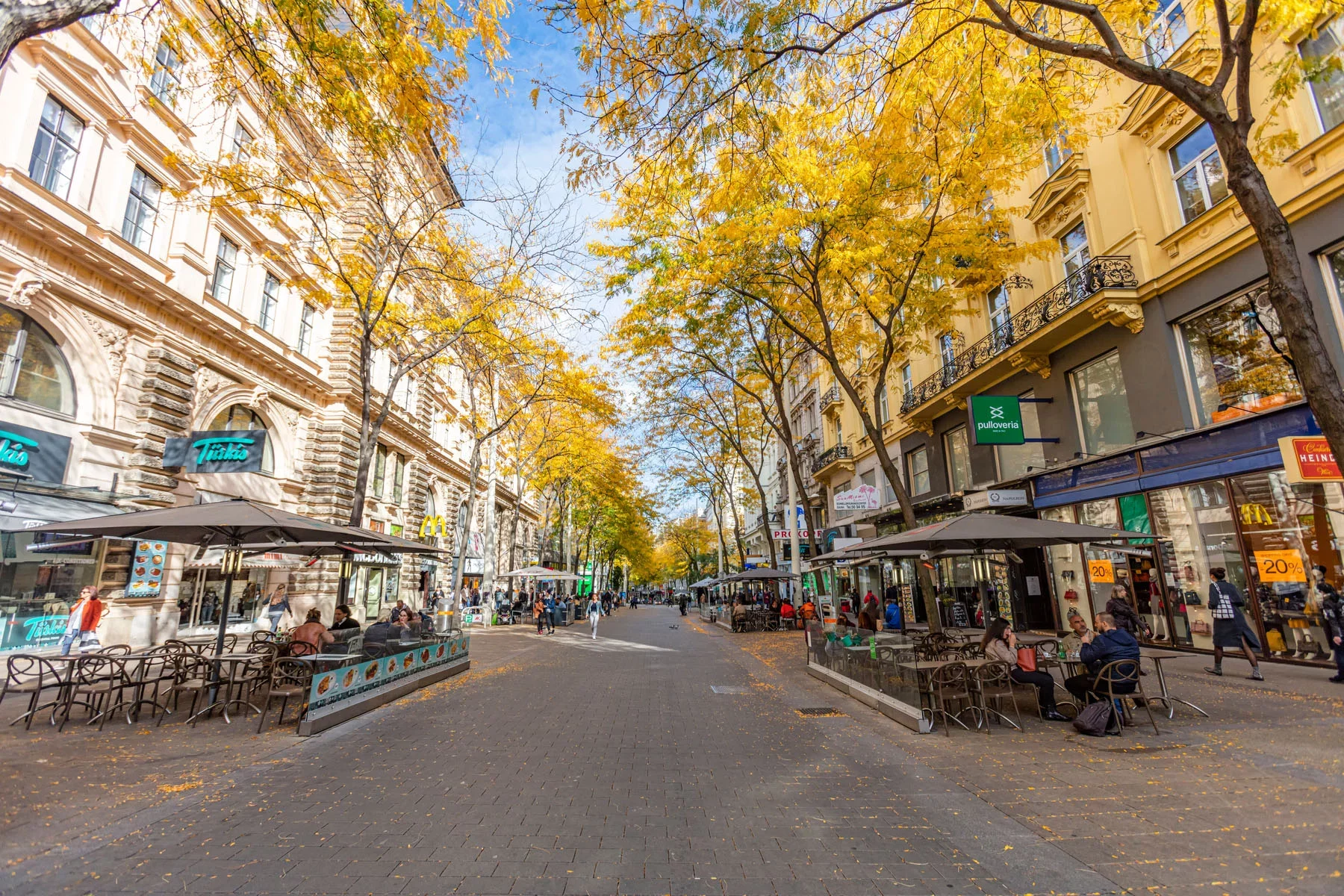Public transport is a popular way to get around Austria. The local network consists of trains, trams, and buses that will get you anywhere you want to go. In fact, there is almost no need to drive in Austria. This helpful guide explains the ins and outs of public transport in the country, including the following:
- Public transport in Austria
- Public transport apps and websites in Austria
- Trains in Austria
- Buses in Austria
- Taxis, Ubers, and other car services in Austria
- Long distance coaches in Austria
- Airports in Austria
- Other methods of public transport in Austria
- Public transport discounts and financial aid in Austria
- How disability-accessible is public transport in Austria?
- How environmentally-friendly is public transport in Austria?
- Public transport safety tips in Austria
- Making a complaint about public transport in Austria
- Useful resources
Omio
Want to fly away from it all? Or maybe you're looking for a family adventure by train? Wherever you're going, Omio can help you find the best deals for your journey. This one-stop shop lets you compare a range of transport modes, explore new destinations, and buy tickets at the touch of a button. Wherever adventure takes you, get there with Omio.
Public transport in Austria
The transport network in Austria is safe, extensive, and reliable. Furthermore, it is fairly cheap, meaning you don’t need to spend a lot of money to get around. Second to driving, public transport is the most popular way of commuting in Austria. In fact, in 2021, 35% of locals used public transport to get to and from work.
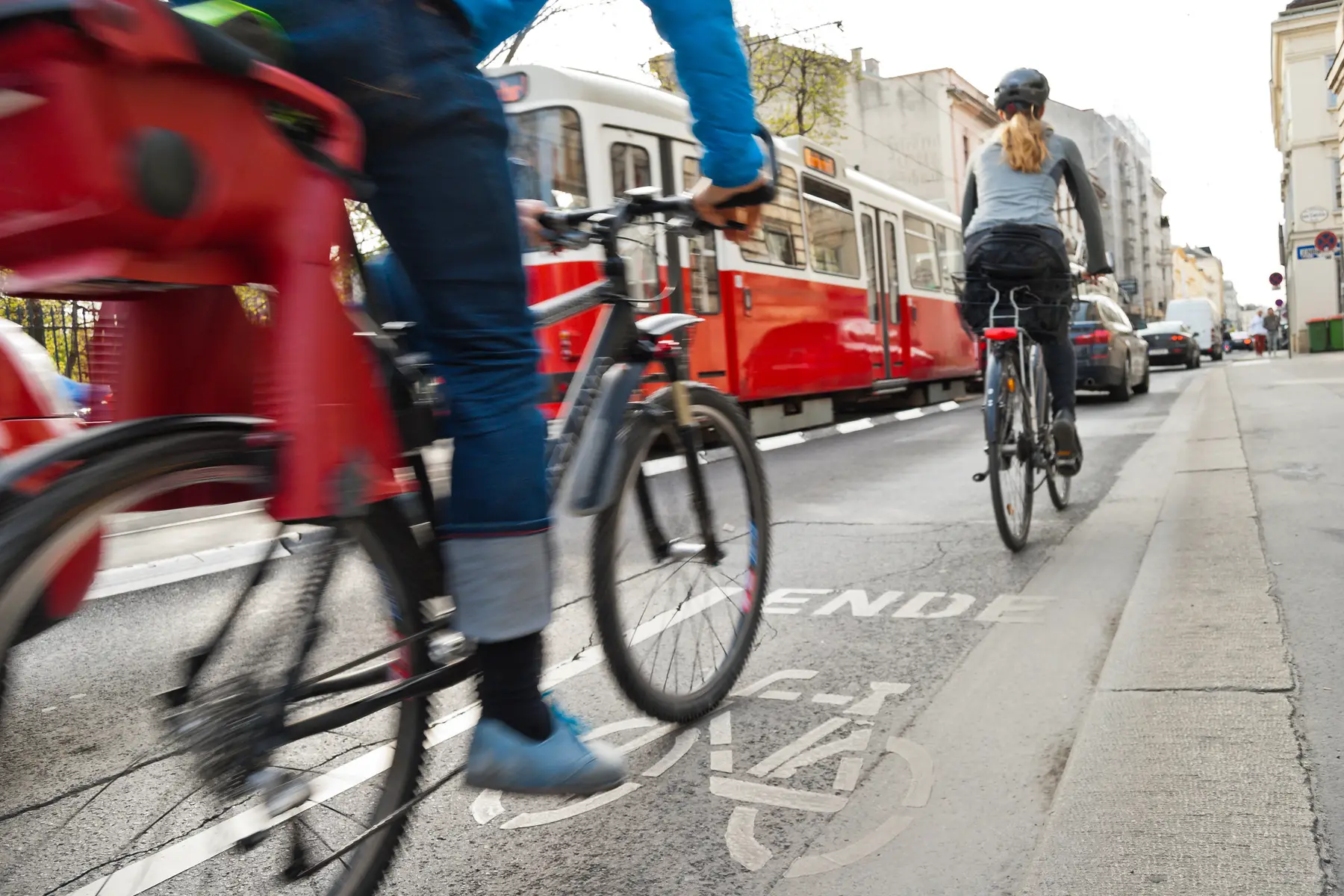
The capital, Vienna, has the best transport system in the country. This includes buses, trams, trains, and a metro. Wiener Linien is the main transport company in Vienna and in 2019, it carried over 4.59 billion passengers. Conversely, Postbus carries over 123 million passengers across the country each year.
Austria is well-connected with trains and buses. However, if you prefer to drive, Austrian motorways are a pleasure to road trip through. That said, trains are the main way to get around the country. Two companies operate these – ÖBB and Westbahn. Postbus operates bus services to smaller towns and regional areas. Booking platform Omio can also help you to find different travel options.
Public transport apps and websites in Austria
In Vienna, WienMobil is the most popular website and app for local public transport. Part of Wiener Linien, the app brings together all of Vienna’s transport systems. As such, you can find information on buses, trams, trains, bikes, car shares, and more. Furthermore, the app allows you to fully plan your trip and make bookings for tickets, taxis, and car shares. Because Viennese residents are also eco-friendly, WienMobil also displays the environmental impact of each route.
Bikes are a top choice of transport in Austria, and each city has its own bike-hire initiative. You can find more details on the following city-centric sites:
- Vienna – City Bike Wien
- Graz – Graz Bike
- Salzburg – City Bike Salzburg
If you are planning a trip to a different Austrian destination, however, you will probably take the train. In this case, you will want to visit the websites for the two local train organizations, ÖBB and Westbahn. Additionally, for smaller towns and rural areas, you may want to use Postbus, the national bus company. For international bus routes, though, visit FlixBus.
Trains in Austria
In Austria, rail transport is run by the national rail company, ÖBB. The company operates many international and national routes. However, a second company – Westbahn – offers other routes within the country, many of which go to smaller towns. ÖBB has a reputation for great service, boasting a punctuality rate of 97%. Because of this, over 1.3 million passengers use ÖBB services every day.
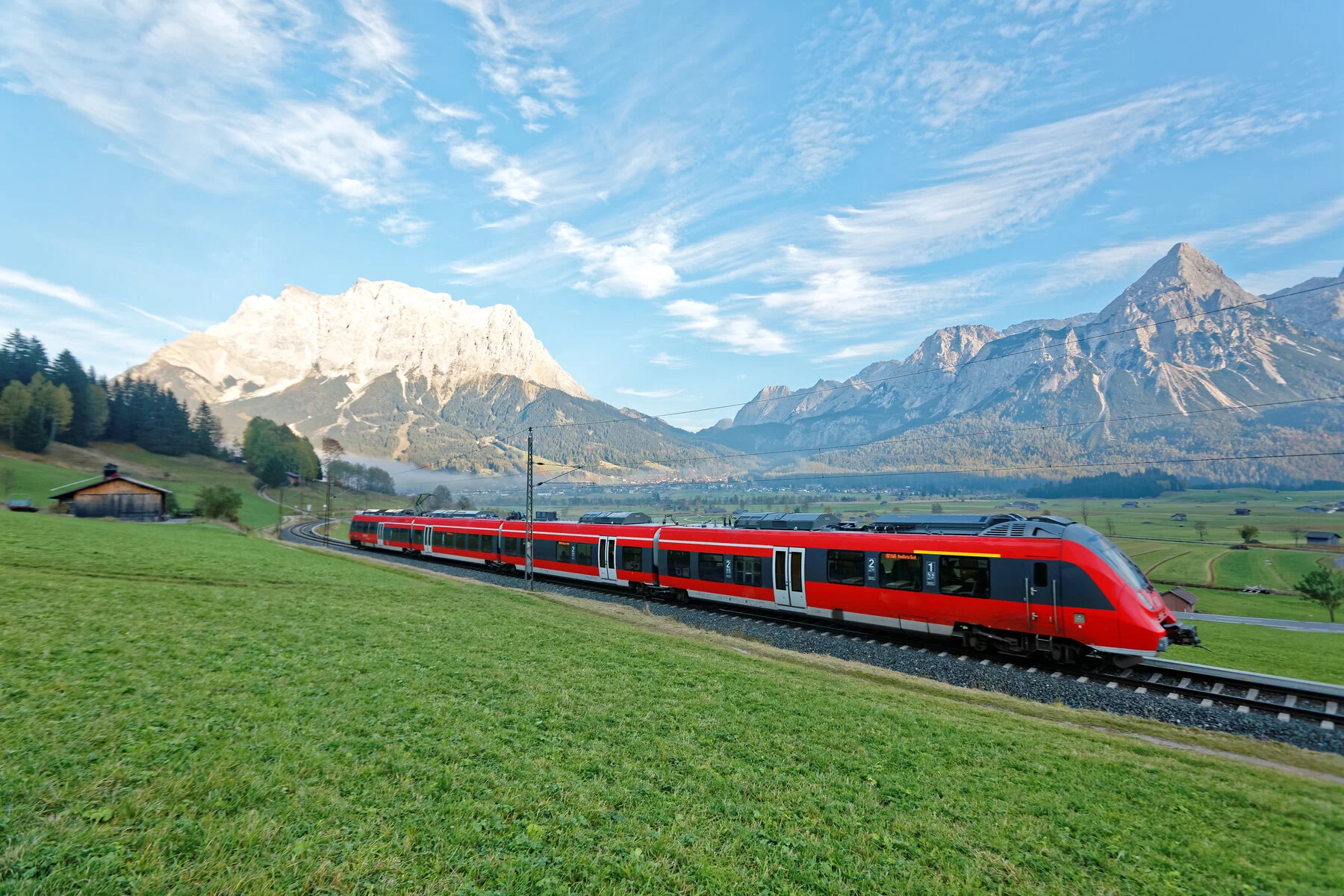
Many cities, including Vienna, Graz, Linz, Salzburg, and Innsbruck, have their own S-Bahn train system, as well as a tram network. Vienna also has a bigger U-Bahn network.
ÖBB runs six national train networks. These are called CityJet, Talent, Desiro, Bilevel Push-Pull, Cityshuttle Push-Pull, and Electric Railcar 4020. Although the exact configurations can differ, each one has a combination of First Class, Business Class, and Comfort Class seats. Business Class tickets come with better seats, worktables and reading lamps, quiet cards, seat reservations, and cabin service. That said, the superior First Class offers more legroom, adjustable seats, electric outlets, lounge access, and restaurant service at seats.
In Austria, you can take small, harmless animals on trains for free. However, they must be in appropriate containers. If your animal is too big to travel as hand luggage, though, you will need to pay a fare. Assistance dogs, however, can travel for free if they are on a valid certificate of disability.
Train tickets and costs in Austria
Buying a train ticket in Austria is easy. ÖBB and Westbahn let you get tickets online or through their apps, as well as automatic machines at most train stations. In addition, you can always buy tickets in person at train stations. Discounts are available for certain groups, including seniors, students, and youths. Similarly, weekly or monthly passes are cheaper than buying single tickets.

There are many types of train tickets available. The ÖBB Standard Ticket gives you the most flexibility. This is because the ticket lets you take any train route and connection. These tickets are valid for up to two days. For night journeys, the ÖBB Komfort Ticket includes reservations and breakfast.
You can find ticket prices by searching for a journey on ÖBB’s Tickets and Services page. How much you pay depends on when you want to travel and how far in advance you book your ticket. There is a small additional charge to reserve a seat.
ÖBB also offers several discount cards for over-65s, families, under-26s, and anyone who uses the train often. Local train networks have their own tickets, and the prices for these can vary greatly. You can find examples of prices for train tickets on the Vienna City network pages.
As in any other country, Austria transport has penalties for fare dodging. Inspections happen frequently and if you don’t have a valid ticket, you will be given a €105 fine. This is payable immediately in cash. If you aren’t able to pay this fine straight away, however, the inspectors will take your personal details and send you an invoice with an extra €30 charge.
Train timetables and maps in Austria
Most transport services in Austria operate nearly 24 hours a day. However, the timings of these can vary. In general, train services are more frequent during the day (every 15–30 minutes) and more sporadic between 22:00 to 06:00.
The ÖBB SCOTTY app is very useful to have on your phone. Because the app includes route planning, timetables, and ticketing, it can make your trips much easier. If you want hard copies of maps and timetables, however, you can find them at train stations.
Train stations in Austria
As in most of Europe, train stations in Austria can offer many different services. Usually, train stations in big cities have far more facilities, while those in small towns have fewer.
For example, Wien Hauptbahnhof, the main train station in Vienna, is open from 05:45 to 22:30. During this time, there are in-personal sales and information counters. Additionally, the station has a lounge, luggage lockers, cafés, shops, and toilets.
Conversely, smaller rural stations don’t have onsite salespeople, just vending machines. While there are usually toilets, they often won’t have shops and cafés.
City and regional trains in Austria
All the big cities in Austria have their own city-wide or regional train network. Vienna is the only city with a metro system, but it also has an S-Bahn and U-Bahn network for the city’s suburbs. Wiener Linien operates most of these, including five underground lines and 29 trams.
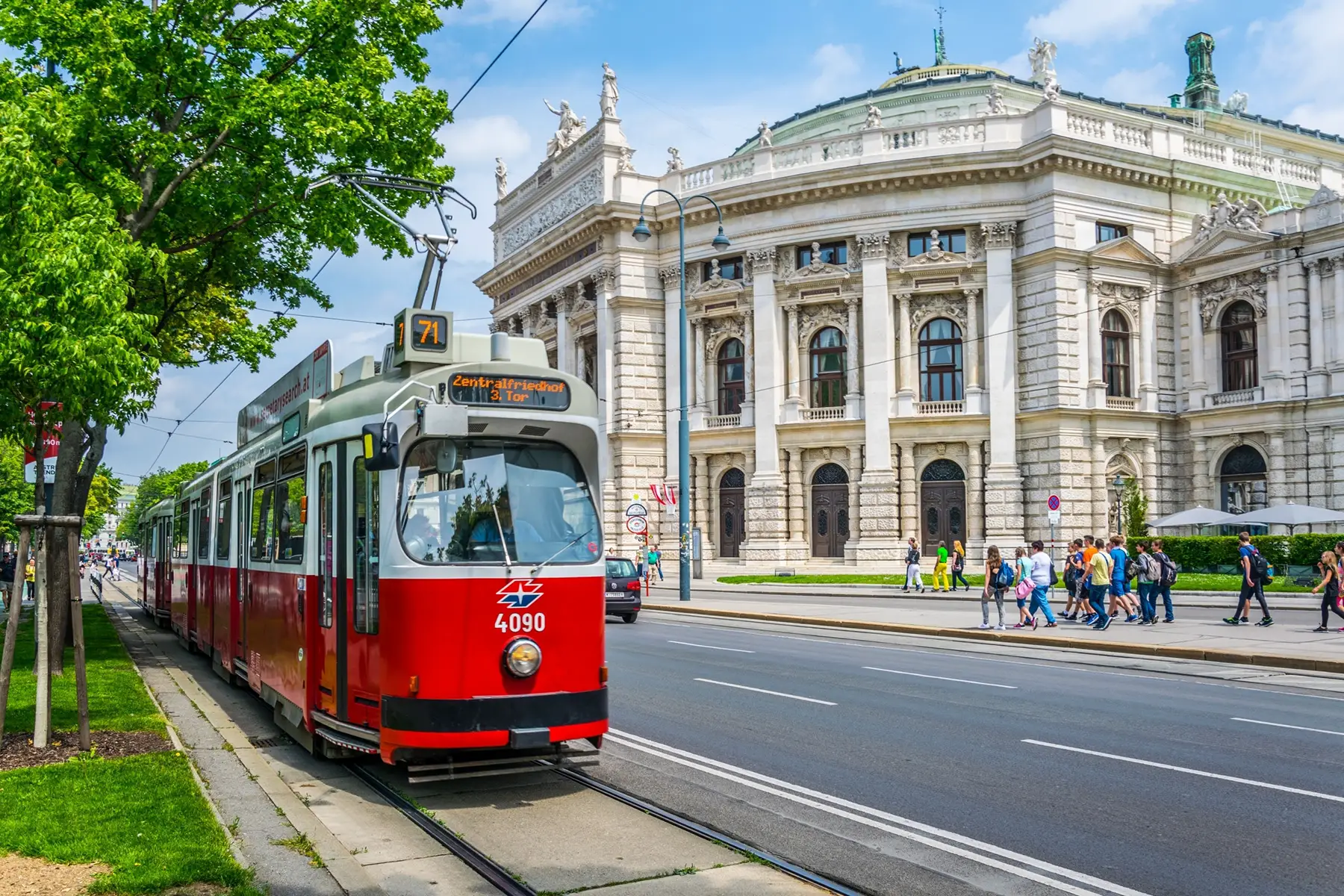
Furthermore, some of these operate as night lines; during the weekend, the metro operates all day. There are discounts available for annual, weekly, and monthly passes, as well as for youths, seniors, and students.
Similarly, Graz has six tram lines. The lines operate between 05:00 and midnight, at intervals of five to 20 minutes. There is a one-hour ticket available, a 24-hour ticket, and passes if you use public transport more often. Tickets can be bought on trams or at the central station.
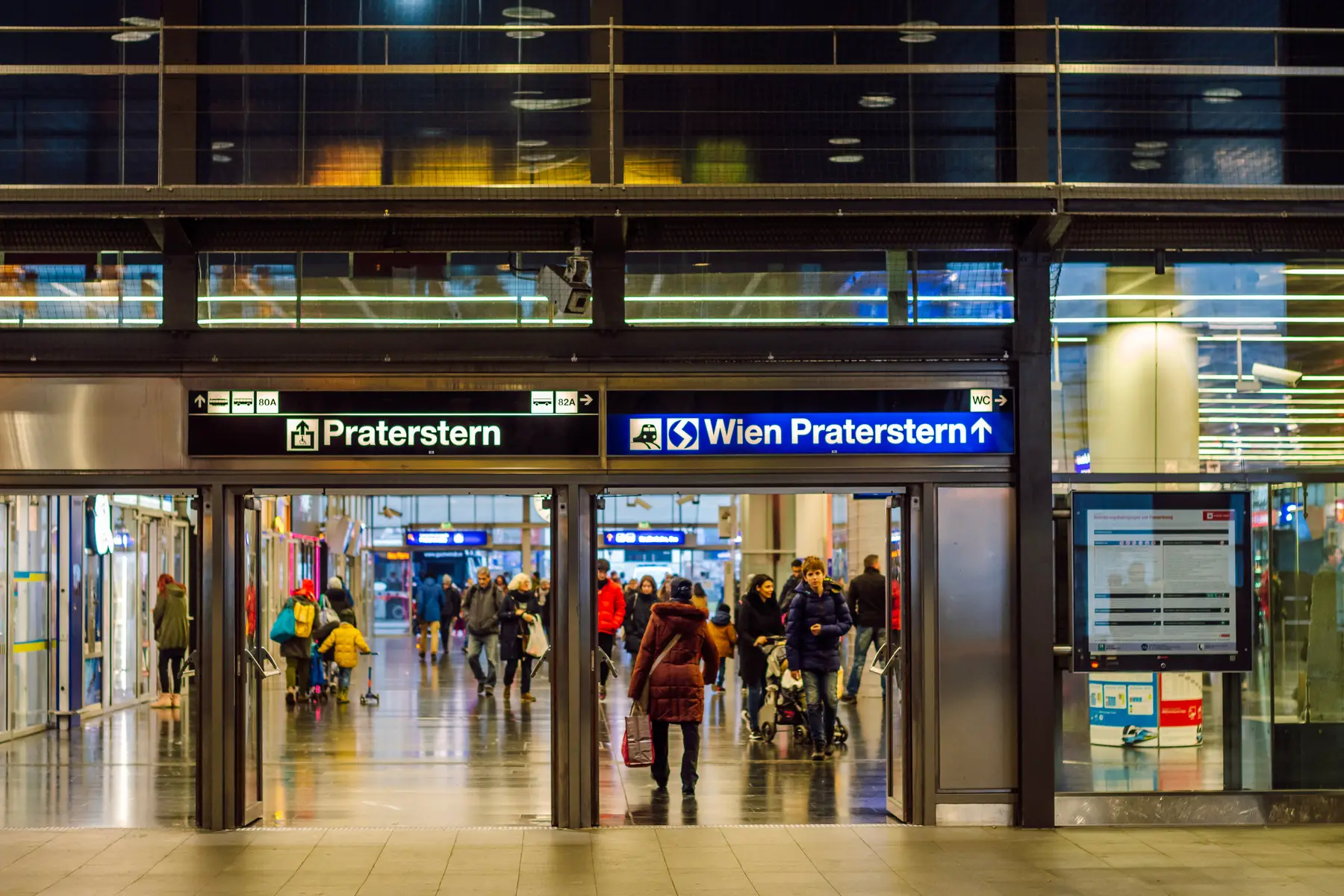
Another regional capital, Salzburg has an eco-friendly transport system made up of electric trams and buses. During the day, they run every 10 minutes, but they become less frequent at night. You can find ticket prices online.
International trains in Austria
The ÖBB runs several international train services. These run from Austria to cities all over Europe on either Eurocity or Nightjet trains. In some cases, you may need to connect to a train run by a local company in another country. In general, though, you can expect a similar level of service as on ÖBB’s Austrian trains. These trains offer a direct connection to countries such as:
- Belgium
- France
- Germany
- Italy
- The Netherlands
- Poland
- Romania
- Switzerland
- Slovakia
- Slovenia
- Czechia
- Hungary
There are also connections that allow you to reach Denmark, Croatia, and Luxembourg easily.
You can usually buy just one Sparschiene ticket to use on these services.
Buses in Austria
Buses are an important part of the Austrian transport system. This is because they often operate night services and routes to small towns and complement the national train network.
Postbus – an ÖBB subsidiary – operates a lot of regional buses in Austria. Onboard, most Austrian buses are of good quality and have air conditioning. Regional buses will also have Wi-Fi, toilets, and power sockets. Additionally, many drivers will speak German and English.
Many international bus services also operate through Austria. These connect with many other major European cities in Germany, France, Slovenia, Italy, and more. The most common international bus line is FlixBus.
Bus tickets and costs in Austria
The price of bus tickets in Austria depends on your route. For example, a single ticket on the Vienna Airport line costs €8. However, local buses will be much cheaper, while regional trips will cost far more.
Bus timetables and maps in Austria
In general, bus services are available from 05:00 to midnight. However, the bigger cities – like Vienna – often have night lines, especially on the weekends. You can find timetables and maps for buses on the Postbus website or get hard copies at the main stations.
Bus stations and stops in Austria
Austrian bus stops are similar to those you will find in other countries. They are simple shelters, or sometimes just a marker. However, bigger bus stations are sometimes part of a train station and offer similar facilities.
Taxis, Ubers, and other car services in Austria
Although they aren’t used very much, taxis in Austria are usually reliable. They are also often cheaper than taxis in other Western European countries. In cities, you can expect to pay a minimum charge of €3.60 to start a taxi ride. All city trips are charged according to the meter, and you should expect to pay a 10% tip. You can easily get a cab from a train station or taxi stand, especially in Vienna. Taxis will accept payment by cash or card.
If you want to book a taxi, you can do so through the local company’s app. Additionally, the FREE NOW app makes it easy to get a cab quickly. If you prefer to call, however, here are some numbers you should keep at hand:
- 60160 Taxi: 01 60 160
- 40100 Taxi: 01 40 100
- 31300 Taxi: 01 31 300
These days, most Viennese prefer to use Uber. Simply download it to your phone and order a ride when you need one. The ride will be charged to your linked credit card.
Long distance coaches in Austria
If you want to travel long distances in Austria and beyond, you can also take the ÖBB Intercitybus. This bus provides air conditioning and air conditioning, and if you travel first class, there are working areas, electrical outlets, and newspapers. The Intercitybus runs on the following routes to:
- Graz – Klagenfurt
- Villach – Udine – Venice
- Villach – Udine – Trieste
The main company running international bus routes is Flixbus. Both run journeys to cities all over Europe, linking Austria to thousands of destinations across the continent. Other long distance coach operators working in the country include Czech RegioJet and Bulgarian Union Ivkoni (Юнион Ивкони).
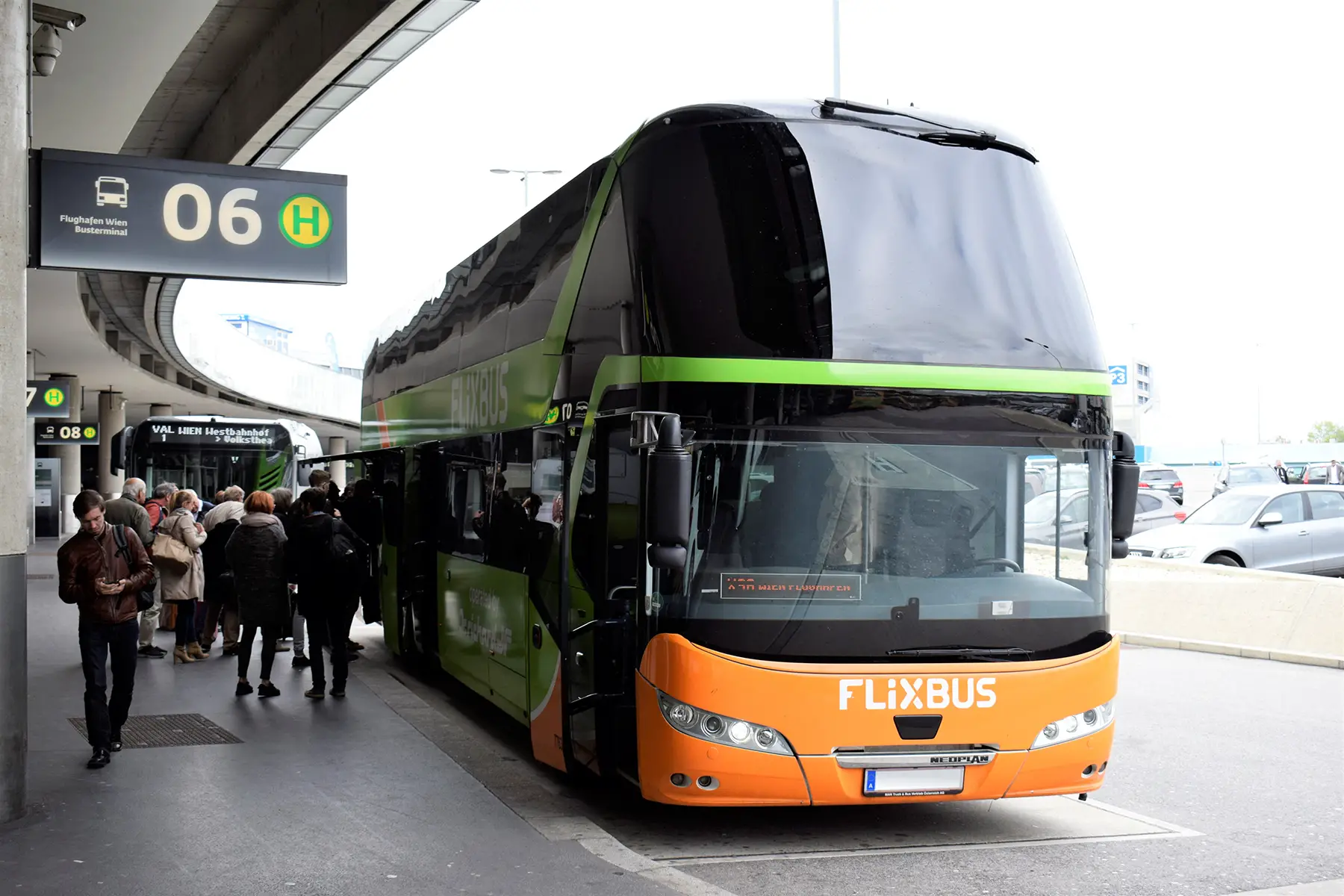
Most international coaches travelling across Austria offer free Wi-Fi, snacks and drinks, electricity, toilets, and luggage space. You can often download an app to book tickets and keep an eye on the status of your journey. Depending on how far you book in advance and your route, you’ll likely find coach travel slightly cheaper than going by train or plane.
You can usually catch a Flixbus from major railway stations in Austria. Bear in mind that other providers might have stations outside the city center, so check your ticket well in advance to find out where you need to go to catch your coach.
Airports in Austria
Government-owned Austro Control oversees air traffic safety in Austria. As the country is part of the European Union, the EASA is also responsible for the safety of its civil aviation. There are three main airlines based in Austria:

Austria has six international airports, and in 2021, they saw 11.2 million passengers.
Vienna International Airport
Vienna International Airport (Flughafen Wien – VIE) is the country’s largest. It has four terminals and has flights to locations all over the world. Although it’s located just 18 kilometers from Vienna, it also serves Bratislava, about 57 kilometers away. It hosts many international airlines including Austrian Airlines, Lufthansa, and Air France-KLM. Furthermore, budget airlines such as Ryanair and easyJet operate out of the airport.
You can reach the airport by train from elsewhere in Austria, Czechia, and Hungary. If you’d rather travel by bus, there are connections from Austrian cities and FlixBus and other long-distance services from Croatia, Czechia, Germany, Hungary, Poland, Romania, Slovakia, and Slovenia. Vienna Airport is located just off motorway A4 from Vienna to Budapest and has a wide range of parking facilities. You can also reach the airport on two wheels – a cycle route connects it with local cycle paths.
Salzburg Airport
Austria’s second largest airport is Salzburg Airport (SZG), which is just 3.1km from the city center. Also known as Salzburg Airport W. A. Mozart, it is the hub for Eurowings Europe. It’s also just a few kilometers from the border with Germany. Salzburg Airport is popular among skiers, so offers additional flights during peak ski season. You can find direct flights to the rest of Europe, and connecting flights to worldwide destinations.
You can reach the airport by car, as it has its own motorway exit. There are also several bus routes that serve the airport.
Innsbruck Airport
Innsbruck Airport (INN), also known as Krannebitten Airport, is Austria’s main hub for skiers. The airport offers flights to destinations all over Europe with airlines such as Transavia, easyJet, Jet2, and more. It’s situated in the Alps, but it’s reachable by the A12 and A13 motorways and by bus from Innsbruck Central Station (Hauptbahnhof).
Other methods of public transport in Austria
Being an eco-friendly country, Austria’s transport options include cycling. Most cities and regional areas have facilities for renting bikes. Furthermore, many cities are bike-friendly while regional areas have beautiful long-distance tracks. In general, bike rentals are fairly affordable.

Vienna’s WienMobil Rad is a popular transport choice for locals and visitors. You can pick up and return these bikes at any WienMobil station; there are 185 in the city, usually near transport hubs. However, you must first register online or at a WienMobil terminal with a credit card for a small charge. Your first rental hour is free, and you can find fees for longer hires on the WienMobil website. Technically, if you return the bike within an hour each time, you won’t need to pay for the rental!
The bicycles can be rented at public stations within Vienna and returned at any WienMobil Rad station when you’re done. Visit the WienMobil Rad website to find out how many bikes are available and at which stations.
Public transport discounts and financial aid in Austria
Similar to most countries, public transport in Austria offers discounts for certain categories of travelers. These include:
- Seniors
- Students
- Youths (under 26)
- Frequent travelers (weekly/monthly passes)
Fees are waived in certain cases, such as for people accompanying disabled travelers, or pets traveling in hand luggage. You can find more about discount cards for trains on the ÖBB website and discounted travel in Vienna on the Wiener Linien website.
How disability-accessible is public transport in Austria?
The design of ÖBB trains makes them quite accessible. They often have low-floor access, wide zones, color contrasts, handicapped toilets, and mobile ramps. There are also wheelchair bays on the trains, but ÖBB requires you to book these well in advance. Travelers with specific needs should submit an advanced request – at least 18 hours beforehand (48 hours for trips abroad). It’s also possible to request assistance at short notice (until three hours in advance) at some stations. You can do this by calling 05 1717 5, or by filling in the online form.
Buses in Austria provide announcements and notifications on two large screens on the bus. There is usually one designated wheelchair space, which is not reservable. Most also have ramps to make boarding easier.
The main transport operators in Austria offer a 50% discount for passengers with a certificate of disability. They may also bring an accompanying person or an assistant dog at no extra charge.
How environmentally-friendly is public transport in Austria?
Being quite a progressive country, transport in Austria is usually fairly eco-friendly. For instance, Wiener Linien claims to commit to conserving resources, reducing energy use, and cutting CO2 emissions. The company has been aiming to ensure all buses are electric in the city, and to retrofit tram tracks to reuse energy.
Similarly, most Austrian cities have eco-friendly transport options. Salzburg, for instance, has electric trams and buses. Austria also has one of the highest concentrations of sustainable housing in the world.
Public transport safety tips in Austria
In general, public transport in Austria is very safe. In Vienna, for example, Wiener Linien has multiple rules regarding alcohol, dogs, bikes, noise, begging, and litter. That said, you should always be aware of your surroundings and keep an eye on your belongings. You might also need to wear a mask on transport, so check before you travel. If you run into trouble, though, you can easily contact emergency services.
Making a complaint about public transport in Austria
If you need to make a complaint about transport in Austria, you will need to contact the company’s customer service. ÖBB handles complaints by phone, email, and online. However, it’s always best to make a complaint in writing. Under EU regulations, if you don’t receive a response within a month (or a final response within three months) you can enforce your rights through the Agency for Passenger Rights.
Useful resources
Links to some additional official websites and web pages that provide useful information include:
- Austrian Government Migration Site on Public Transport – an overview of public transport in Austria
- Wiener Linien – site for a public transport company in Vienna
- ÖBB – site for Austria’s national train company
- Westbahn – site for a secondary train company in Austria




